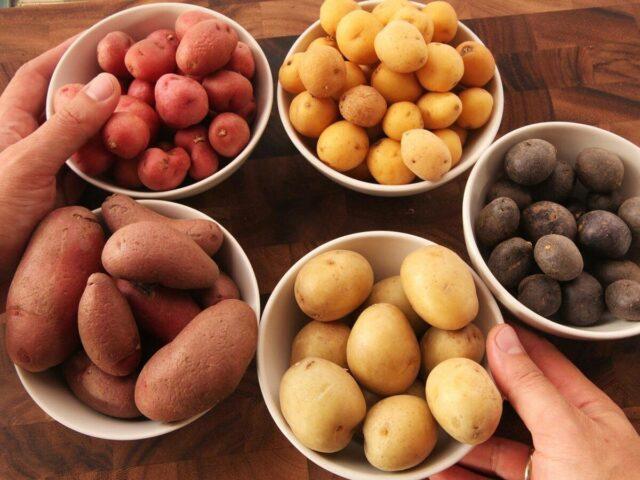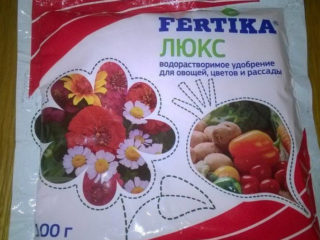Content
Insect pests, primarily the Colorado potato beetle, are a serious problem that often arises when growing potatoes. In order not to lose most or all of the harvest, gardeners practice pre-planting tubers and spraying plants using store-bought preparations or folk remedies. A popular method is to treat potatoes with tar before planting.
Why treat potatoes with tar?
Potatoes, like other nightshades (tomatoes, eggplants, peppers), often suffer from pests. The Colorado potato beetle is especially dangerous for crops; in search of food, it is guided by the specific smell of tops. The sharp and persistent “aroma” of tar “interrupts” it. Accordingly, this substance becomes a kind of “camouflage”; the likelihood of pests attacking the beds is significantly reduced.

The Colorado potato beetle is a pest that is quite capable of leaving a gardener without a potato harvest.
It should be immediately noted that such a procedure is an effective preventive measure, but not a means of combating the Colorado potato beetle and other pests.This is a non-toxic substance: if insects have already been found in the beds, and even more so - they have multiplied in large numbers, the treatment is already useless, the product will not help in destroying them.

Despite the specific smell, if the rules of use are followed, the substance is safe for human health, pets and the environment
How to dilute birch tar for potatoes
To prepare a “basic” solution for treating seedlings, you need to take 30-50 ml of birch tar per 10 liters of water. For spraying tubers and other Solanaceae, the concentration of the active ingredient is reduced to 20-30 ml.
The procedure for preparing a tar solution for treating potatoes before and after planting is extremely simple, but thematic videos will help to present it more clearly:
- Pour the entire required volume of the substance into 1.5-2 liters of warm (35-40 °C) water. Stir vigorously for 2-3 minutes.
- Add the remaining water, also heated. Stir vigorously again for a few minutes. The finished liquid should look “greasy”, quite “dense”, and leave an oily feeling on the fingers.

During the treatment of plantings, the solution will have to be stirred periodically.
If desired, small shavings of laundry or green potassium soap (30-50 g) can be added to the solution for treating tubers before and after planting. It does not particularly affect the effectiveness of the product, but the smell of the liquid becomes a little richer, it “sticks” better to the leaves and tubers, and “stays” on them longer.When preparing the solution, you need to “beat” soap shavings in a small volume of water, turning it into foam, and then pour the “main component” into it.

Laundry soap is one of the popular folk remedies among gardeners with pronounced antiseptic properties.
How to treat potatoes with birch tar
Treating potatoes against the Colorado potato beetle with birch tar just before planting is considered one of the most effective preventive measures to prevent pest attacks. The procedure can protect tubers from both the new generation of Colorado potato beetles and larvae that have successfully overwintered in the soil. Also, this method of using birch tar is effective against wireworms on potatoes.

Any variety or hybrid can be treated before planting
Tubers intended for planting are “pickled” in a solution of birch tar for 5-10 seconds. Another treatment option is to spray them, but a regular fine spray will not work. The thick oily solution quickly “clogs” the holes, making them extremely difficult to clean later. Therefore, they practice “old-fashioned” methods, using a broom or a plastic bottle with holes made in the lid to spray the tubers.

The procedure is very simple: a broom is moistened in the solution and shaken vigorously over the plantings
Another option, much less common, is to instead of treating the tubers directly, pour a little (150-200 ml) of the prepared solution into each well.
About a month after planting, when the potato stems reach a height of 10-12 cm, it is recommended to re-treat them against beetles with birch tar. Use a solution of the same concentration. Not only the plants themselves are sprayed, but also the soil between the rows.
During the season, 2-3 such treatments are carried out (depending on the ripening period of the tubers) with a frequency of 4-6 weeks. If the summer is rainy, the intervals are reduced.
Recommendations for processing
The procedure for treating tubers before planting and spraying potato seedlings with a solution of birch tar seems simple and even primitive. However, for its maximum effectiveness, you need to take into account some nuances:
- To process the plantings, choose a dry, cloudy, fairly warm, windless day. The procedure is planned for the morning or evening. Otherwise, burns may form on the leaves. Spraying in the rain is practically useless - the liquid is almost immediately washed off from the plants.
- You can’t delay processing too much. Otherwise, the peak activity of the Colorado potato beetle will come, and it will have time to “settle” on the plants. After this, spraying will not help.
- Increasing the concentration of the active ingredient in the solution, wanting to achieve a more pronounced effect, is a very bad idea. Such a liquid can simply “burn” young leaves and the root system.In addition, even if the plant survives and forms tubers, their taste will be greatly affected.
- Spraying is carried out as thoroughly as possible. The solution must be applied not only to the front side of the leaves, but also to their backside.

Young potato shoots are a favorite delicacy of the Colorado potato beetle; they definitely need preventive treatment
Which tar to choose
High-quality tar, suitable for processing potatoes before and after planting - a very dark, thick, oily liquid. It appears almost black, but upon closer inspection a green tint is noticeable. The substance also has pronounced antiseptic and antiparasitic properties and a characteristic pungent odor.
On sale there are bottles with the inscriptions “birch” and “birch bark” tar. Both substances are obtained from the same raw materials, but the technology in the second case is more complicated. Birch bark tar is noticeably “cleaner” than birch tar, its smell is noticeably weaker. In principle, it is also suitable for processing potatoes before and after planting, but gives a less stable and pronounced result.

For people with increased sensitivity to odors, birch bark tar is often the only option
Conclusion
Treating potatoes with tar before planting is a fairly effective method of protecting them from pests. The sharp characteristic odor is unpleasant to many insects, including Colorado potato beetles, so they avoid the tubers. To ensure that the procedure does not damage the potatoes, it is necessary to choose the right birch tar, prepare a solution and carry out the treatment itself.
Reviews of the use of tar from the Colorado potato beetle on potatoes








